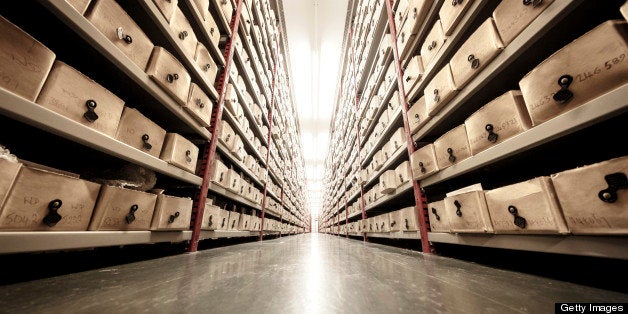
At the end of the first Indiana Jones movie, the newly-found Lost Ark leaves Indy's possession to go to a sterile, austere government holding facility -- an archive. Baskets, beadwork, and bronze sculptures are some of what we preserve in museums and archives. Languages are, too. But language is not some relic whose destiny is best preserved in a pristine acrylic tomb. Language is meant to be used. It is the living embodiment of what it means to be human, encoding and expressing memories of those generations long ago and yet to come. And right now, representatives from a variety of Native American tribes have converged on Washington, D.C. archives to breathe new life into their languages, to transform language preserved into language lived and language living.
With abundant natural resources found in its forests, coasts, mountains and meadows, California is rich in biodiversity. No less rich in cultural and linguistic diversity, California is estimated by scholar Victor Golla to be home to 78 distinct Native California languages, which he estimates as making up "nearly a third of the indigenous languages" spoken north of Mesoamerica. Spanish missions, boarding schools, segregation of public education, all these and more led to dwindling numbers of fluent speakers of Native American languages. California tribes turned the drastic loss of their languages into innovative approaches for teaching endangered languages. One such approach, the Breath of Life, Silent No More Workshop, converted preservation into reclamation by reuniting communities with their heritage, these archived language materials. Breath of Life co-founders Leanne Hinton (Professor Emerita of UC Berkeley) and L. Frank Manriquez (Tongva/Ajachmem) recognized access includes not only physical objects like manuscripts, but also the linguistic knowledge to comprehend the materials. Their model pairs each heritage language team with a linguist mentor, the goal being to facilitate learning the linguistic structure of their language as a path to learn and to teach that language.
Linguistics lies in the borderlands of science and humanities, and nowhere is that shown more brilliantly than in the Breath of Life language reclamation model. Participants are trained as citizen scientists investigating their own language and culture. The splendor of language is its systematicity, a rule-governed set of patterns that astonishes us in in its majesty. But language simply is not a clinical object or specimen. Language is humanity. Real living people connect with recordings of their uncles and aunties, learn to worship and pray in their language, and introduce themselves in a language spoken fluently by their ancestors. Language is humanity.
Right now, my friends on Team Shawnee, Roy Baldridge, Eric Wensman and Mosiah Salazar Bluecloud, are in D.C. attending the National Breath of Life Archival Workshop for Indigenous Languages. I first met Roy in 2012 at the Oklahoma Breath of Life Workshop, which I co-directed with Mary Linn, a scholar of Oklahoma languages now at the Smithsonian. Both the National and Oklahoma Breath of Life workshops have been supported by the National Science Foundation's Documenting Endangered Languages Program and the Myaamia Center, as well as other sponsors. Roy's journey as a citizen scientist, reconnecting with his Shawnee linguistic heritage, is impressive. Shawnee is a language in the Algonquian family, which takes English grammar, kicks it up about 50 notches and then throws a left hook.
The spread of Breath of Life workshops is simultaneously joyful and grim. Joyful because people are reunited with their past, as well as given hope in their present and future by renewing their language. Grim because these workshops are necessary to reclaim community languages in the absence of fluent speakers. Without language endangerment, there would be no need for such a workshop. Why? Because where fluent speakers exist in robust numbers, people are using their language naturally in the home, with infants, toddlers and teens.
With the overwhelming threat to so many of the world's languages, we are like Indiana Jones, only on a race to learn about each of these estimated 6,000 linguistic treasures which represent the pinnacle of human intellect, language. Indy's quest, however, is unlike that of the linguists and citizen scientists, who hope linguistic diversity -- and speakers -- persevere. A true and deep understanding of human language relies on the knowledge held by fluent speakers. For languages without fluent first language speakers, bountiful and perceptive archival materials are the next best thing. What a blessing language archives are! They resuscitate language for communities and they help scientists to unlock the keys for more refined insights into the mighty magnificence of our human brain.
To learn more about the Breath of Life workshops and related topics, try these resources: